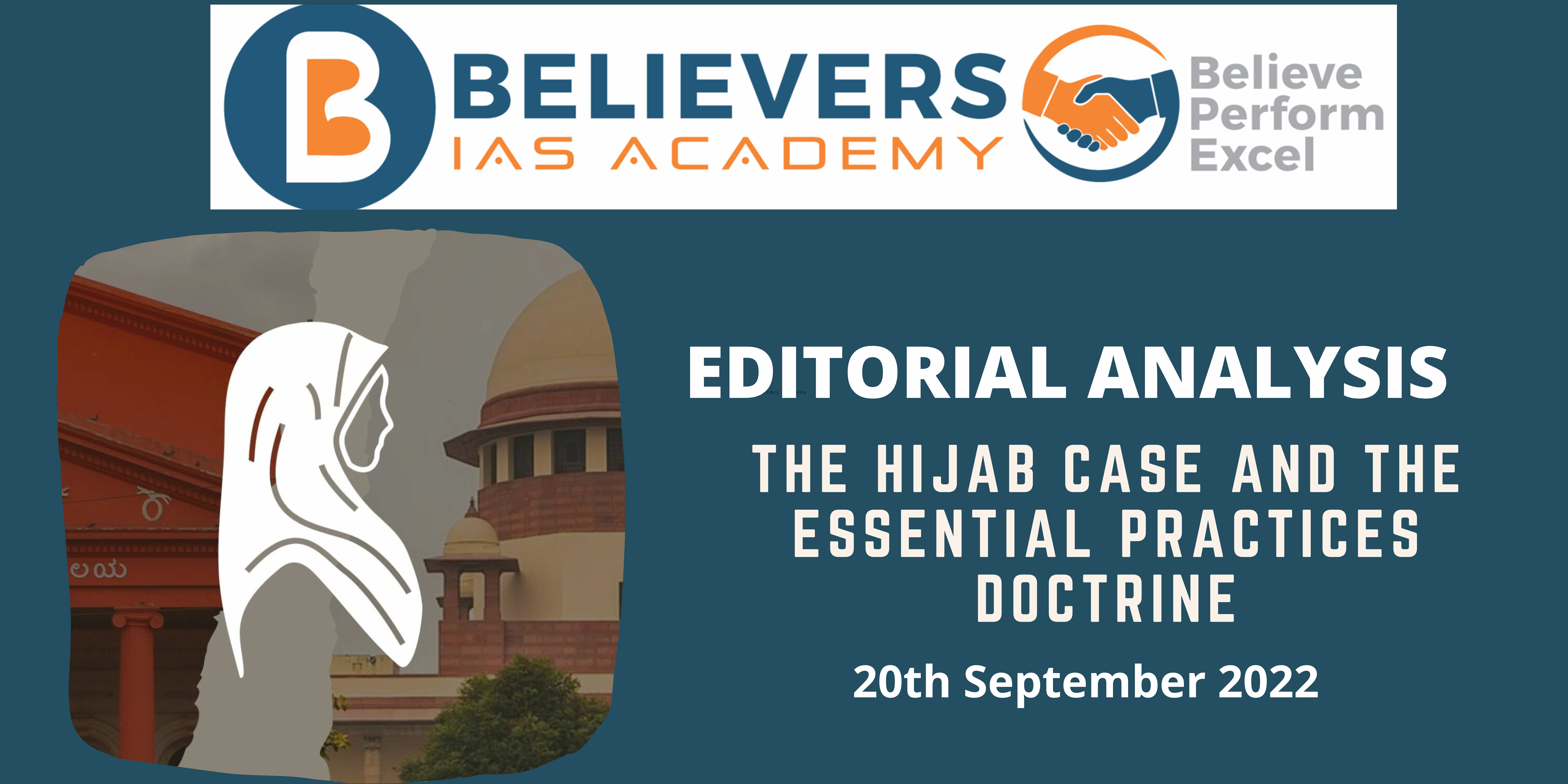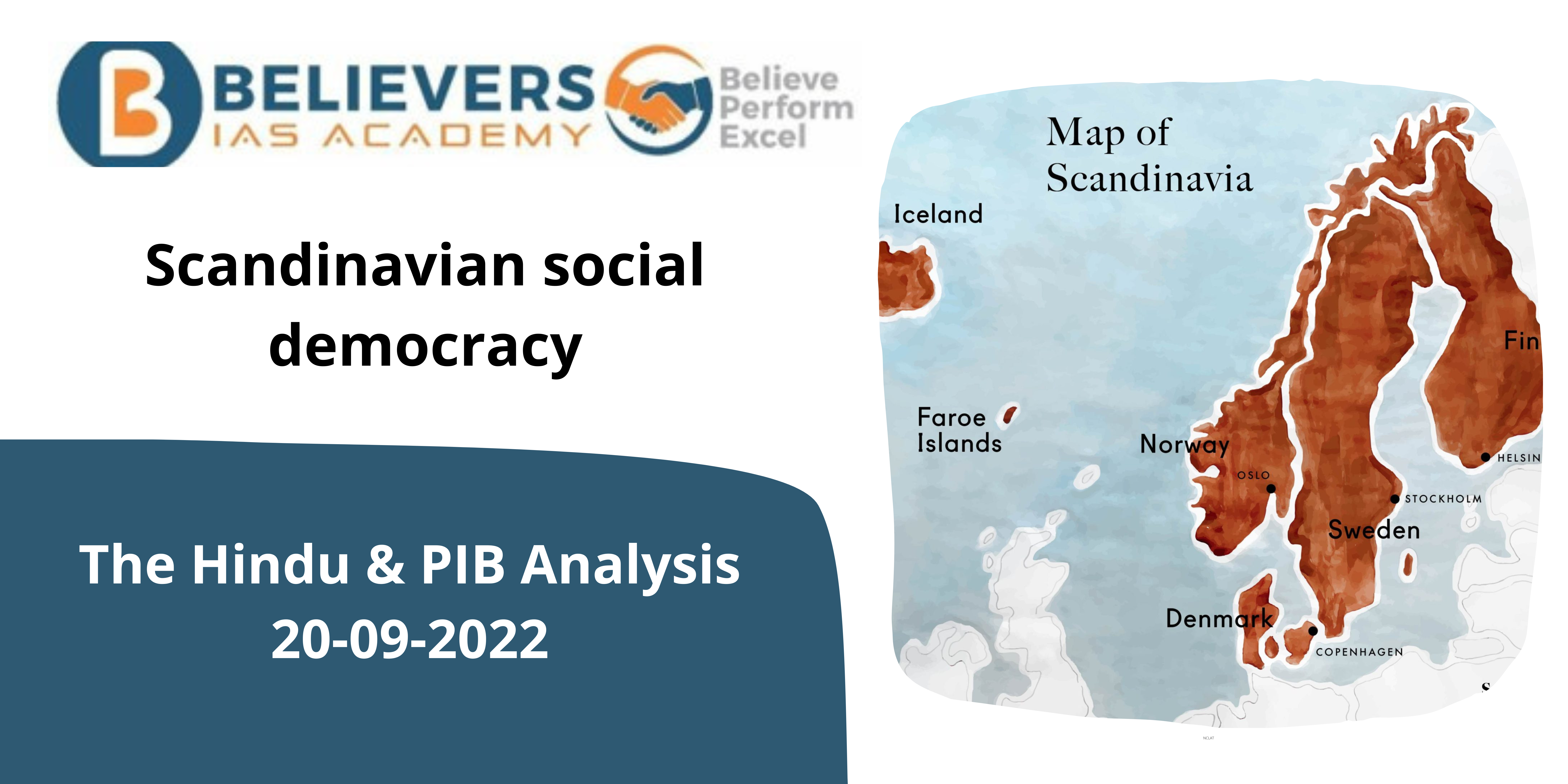The hijab case and the essential practices doctrine
#GS-02 Judiciary
For Prelims
About Doctrine of Essentiality:
- The doctrine of “essentiality” was invented by a seven-judge Bench of the Supreme Court in the ‘Shirur Mutt’ case in 1954.
- It prescribes that the constitutional protections for religions only apply to those religious practices which were essential and integral to the religion.
For Mains
What are the decisions given by Karnataka High Court:
The Karnataka High Court made three primary findings in its judgment.
- First, it held that the use of a hijab is not essential to the practice of Islam. Thus, the right to freedom of religion was not violated.
- Second, it ruled that there exists no substantive right to freedom of expression or privacy inside a classroom and, therefore, these rights were simply not at stake here.
- Third, it held that the ban did not stem directly out of the government’s order, which only called for a uniform dress code to be prescribed by the State or school management committees hence, the law did not discriminate, either directly or indirectly, against Muslim students.
What is the question in front of Supreme Court.
- To decide on the constitutionality of this verdict, the Supreme Court need not answer all the questions posed before it. A reversal of any of the three findings made by the High Court ought to result in a nullification of the ban.
- If the petitioners can establish that the law’s seemingly neutral language does not negate the ringfencing of most forms of expression against the singling out of the hijab, and for that reason if they can show that Muslim women have been discriminated against, the Bench must reverse the High Court’s judgment.
- Similarly, if the petitioners can establish that there is nothing to suggest that there exists no right to freedom of expression within the confines of an educational institution, then the onus shifts to the State to show that the ban is proportionate and legitimate.
- That analysis was never conducted by the High Court because in its belief, classrooms are “qualified public spaces” where individual rights must give way to the interests of “general discipline and decorum”.
The legal basis for Doctrine of Essentiality:
- The idea behind essential practices doctrine was created a speech made by B.R. Ambedkar in the Constituent Assembly.
- Ambedkar wanted to distinguish the religious from the secular, by arguing that the state should be allowed to intervene in matters that are connected to religion but are not intrinsically religious.
- Based on his views Supreme Court, in the Shirur Mutt case in 1954, held that to determine what constituted an ‘essential’ aspect of religion, the Court ought to look towards the religion concerned, and to what its adherents believed was demanded by their faith.
The criticism of Essentiality Doctrine:
- There have been criticisms from multiple religious experts saying that the Court has assumed something akin to an ecclesiastical power and is determining whether a practice which was religious in nature was also “essential” to that religion, which is beyond its capability.
- The Court’s usage of this doctrine is said to have achieved two things, neither of which is particularly desirable.
- First, it has allowed the Court to narrow the extent of safeguards available to religious customs by directly impinging on the autonomy of groups to decide for themselves what they deem valuable, violating, in the process, their right to ethical independence.
- Second, it has also negated legislation that might otherwise enhance the cause of social justice by holding that such laws cannot under any circumstances encroach on matters integral to the practice of a religion.
What are the alternatives to Essentiality Doctrine:
- Justice D.Y. Chandrachud proposed one such doctrine: a principle of anti-exclusion.
- Anti-exclusion as explained by Justice D.Y. Chandrachud means “the anti-exclusion principle allows for due deference to the ability of a religion to determine its own religious tenets and doctrines. At the same time, the anti-exclusion principle postulates that where a religious practice causes the exclusion of individuals in a manner which impairs their dignity or hampers their access to basic goods, the freedom of religion must give way to the over-arching values of a liberal constitution”.




